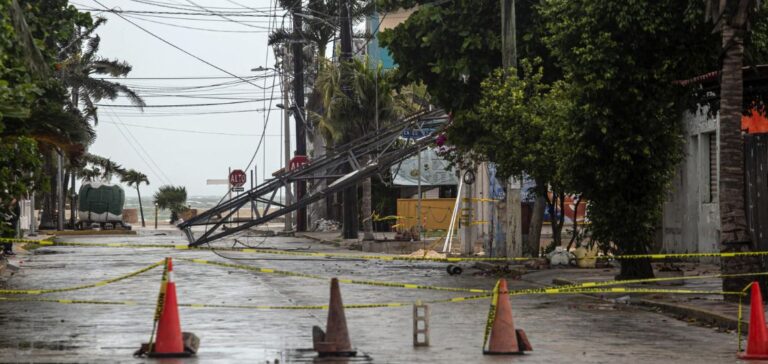Hurricane Beryl, which struck the Texas Gulf Coast on July 8, caused extensive damage to the electrical infrastructure, leaving almost a million customers without power in East Texas. Five days after the storm, some 500,000 customers remain in the dark, with high temperatures adding to the difficulty of the situation. Recovery efforts are underway, but the challenges are many.
CentrePoint Energy and the challenges of restoration
Electricity supplier CenterPoint Energy, serving mainly the Houston area, is one of the hardest hit. At the peak of the crisis, 2.26 million of its 2.6 million customers were without power. By July 12, this figure had been reduced to 860,000, but restoration efforts remain complex and laborious. Lynnae Wilson, CenterPoint’s Senior Vice President, pointed out that the damage caused by trees and other vegetation due to the high winds had considerably delayed repairs.
Since the restoration effort began, teams have replaced over 2,000 poles and treated damage caused by over 6,000 trees. Despite significant progress, it is expected that 80% of affected customers will have their power restored by July 14, leaving around 450,000 customers still without service.
Impact of high temperatures and energy demand
The situation is exacerbated by a persistent heat wave. The National Weather Service has issued heat advisories for 12 counties in East Texas, including Harris County, where Houston is located. The forecast calls for temperatures of up to 91 degrees Fahrenheit, with heat indices of up to 102 degrees Fahrenheit.
Despite these high temperatures, energy demand, as measured by the Electric Reliability Council of Texas (ERCOT), remains below five-year averages for the period July 8 to 12. However, ERCOT expects demand to exceed these averages on July 14 and 15, which could put additional pressure on the power grid.
Energy prices and outlook
Energy prices were also affected by this situation. For the period July 8-12, real-time prices at ERCOT’s Houston Hub averaged 84.5% below 2019-2023 daily averages. At the same time, Houston Ship Channel spot prices fell by an average of 46.3% over the same period, although not as sharply as electricity prices.
This price reduction reflects the drop in demand due to massive power outages and efforts to manage energy consumption. The gradual resumption of electricity supply should normalize prices as demand increases.
The challenges of repairing infrastructure and managing extreme heat highlight the vulnerability of power systems to extreme weather events. Ongoing restoration efforts and energy demand forecasts indicate a gradual improvement in the situation, although a full return to normal may still take some time.
Analysis and reflection
Hurricane Beryl revealed structural weaknesses in Texas’ electrical infrastructure, highlighting the need for improvements to cope with future storms. The efforts of CenterPoint Energy and other suppliers are crucial to restoring customer confidence and ensuring network resilience. The current situation could also prompt deeper reflection on investment in more robust and resilient technologies to minimize the impact of natural disasters on power systems.






















